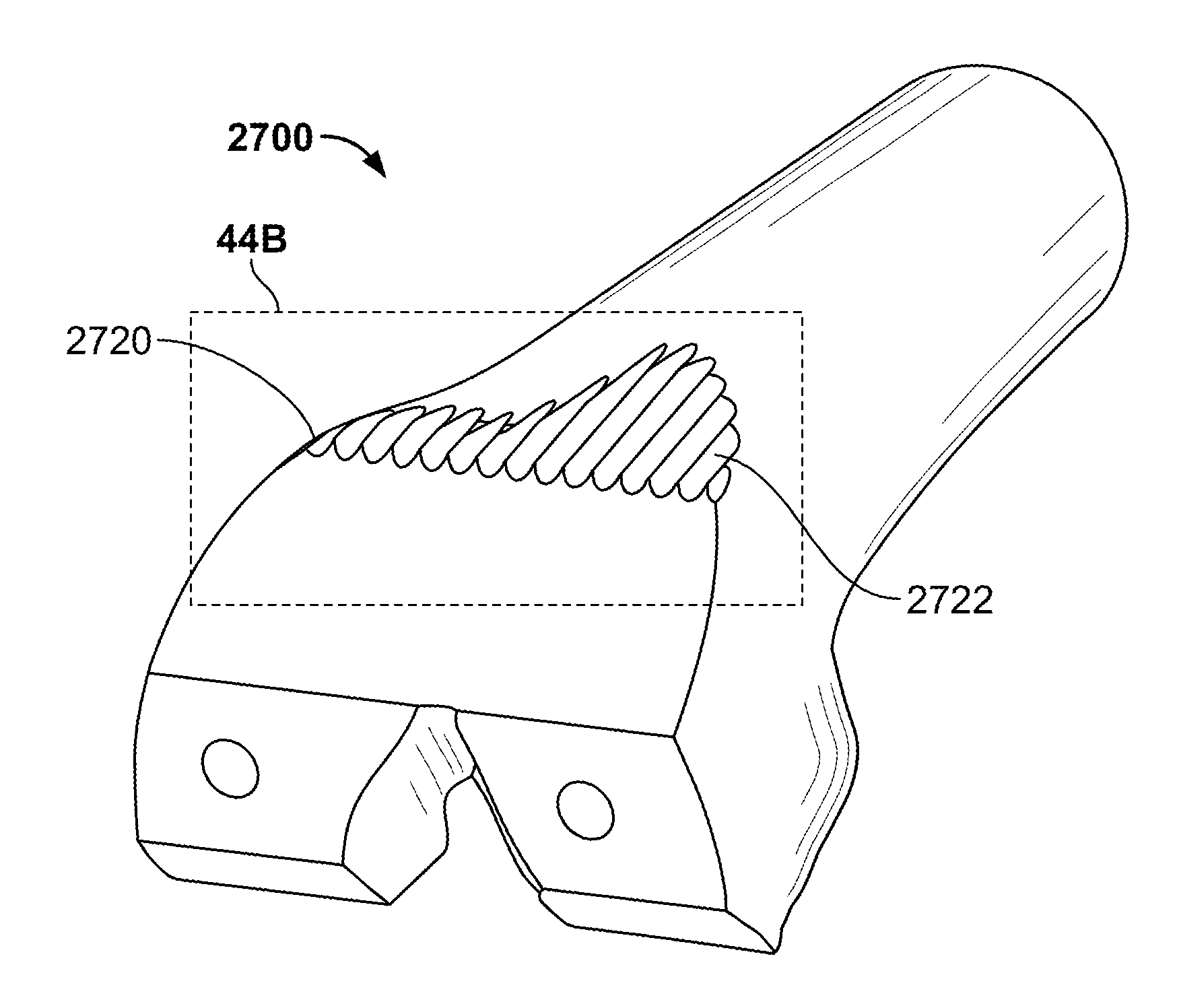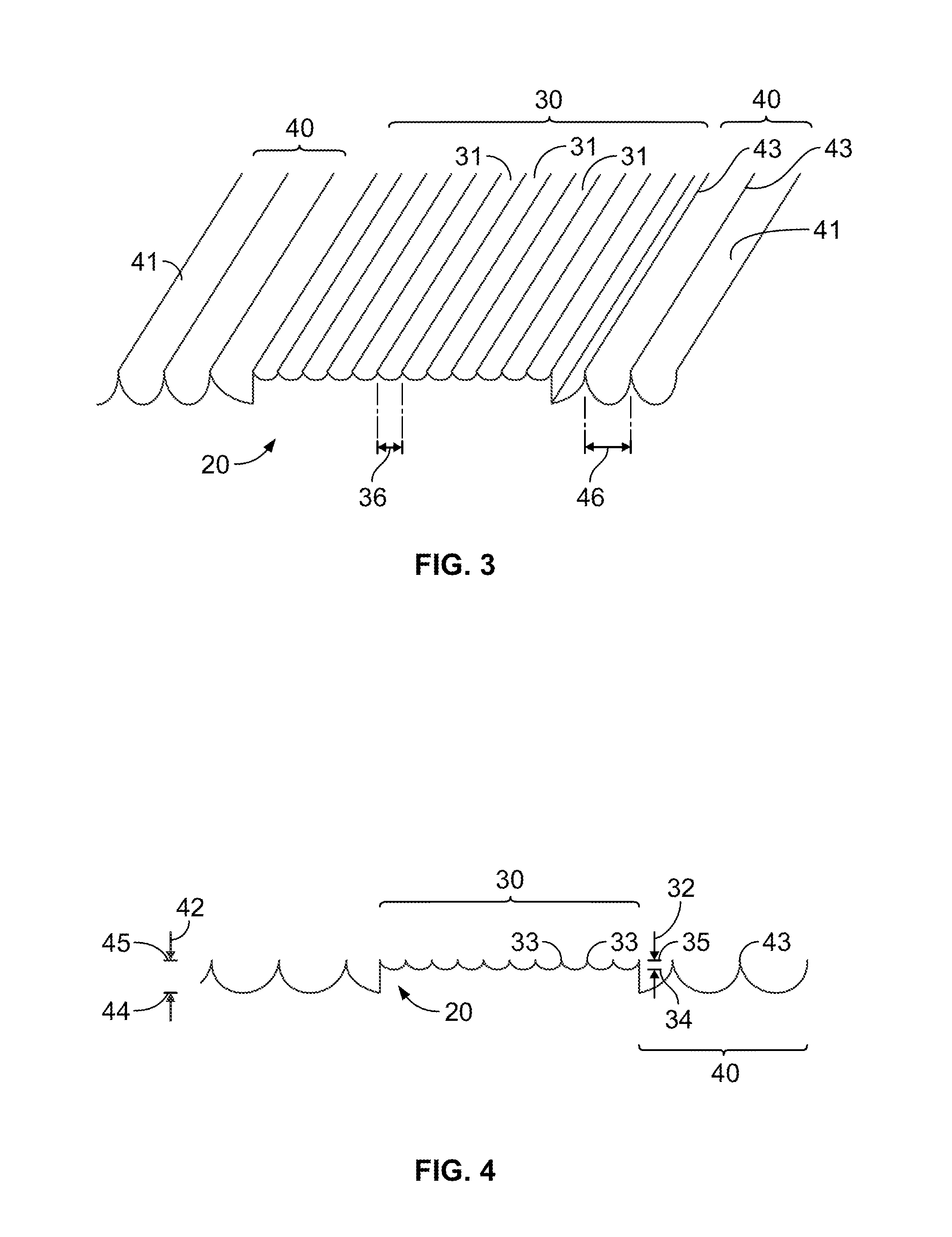Bone pads
a technology of bone pads and bone marrow, which is applied in the field of bone pads, can solve the problems of affecting the initial fixation of cementless implants, the inability to properly prepare the bone, and the subsequent bone resorption, so as to improve the long-term bone ingrowth/ongrowth, improve the and improve the effect of initial fixation and stability
- Summary
- Abstract
- Description
- Claims
- Application Information
AI Technical Summary
Benefits of technology
Problems solved by technology
Method used
Image
Examples
Embodiment Construction
[0071]As used herein, the term “distal” means more distant from the heart and the term “proximal” means closest to the heart. The term “inferior” means toward the feet and the term “superior” means towards the head. The term “anterior” means towards the front part of the body or the face and the term “posterior” means towards the back of the body. The term “medial” means toward the midline of the body and the term “lateral” means away from the midline of the body.
[0072]FIG. 1 illustrates a perspective view of a tibial bone 10. Bone 10 includes an unprepared region 11, a sagittal surface 15 and a transverse surface 20. Region 11 preferably retains unaltered or non-resected patient anatomy, which may include, for example, one or more of the following: articular cartilage, meniscus, and anterior and posterior cruciate ligament insertion regions. Sagittal surface 15 and transverse surface 20 represent cartilage / bone that have been prepared for an orthopedic procedure such as, for exampl...
PUM
 Login to View More
Login to View More Abstract
Description
Claims
Application Information
 Login to View More
Login to View More - R&D
- Intellectual Property
- Life Sciences
- Materials
- Tech Scout
- Unparalleled Data Quality
- Higher Quality Content
- 60% Fewer Hallucinations
Browse by: Latest US Patents, China's latest patents, Technical Efficacy Thesaurus, Application Domain, Technology Topic, Popular Technical Reports.
© 2025 PatSnap. All rights reserved.Legal|Privacy policy|Modern Slavery Act Transparency Statement|Sitemap|About US| Contact US: help@patsnap.com



